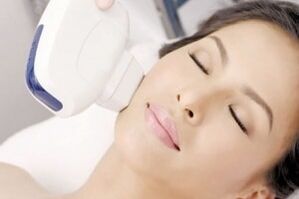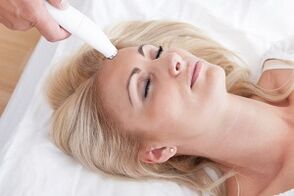Non-ablative photorejuvenation is a modern cosmetic technology that improves the appearance and condition of the skin.
The medical effect of the laser can be ablative, based on the destruction of the surface layers of the skin, or non-ablative, in which the deeper tissues can be heated and possibly targeted destroyed without damaging the surface layers. The classic methods of laser cosmetology are ablative technologies - skin rejuvenation, scar tissue removal. However, modern lasers can stimulate positive changes in the skin without significant damage. Such effects are actively used to achieve an effect called photorejuvenation. Under the influence of a specially created ("enhanced") beam of light - therefore the word "photo" smoothes small and medium wrinkles, improves complexion, restores skin elasticity and smoothness; skin aging stops.
Photorejuvenation mechanism

With non-ablative photorejuvenation, the microstrip penetrates the tissues to the required depth (up to 3 mm). Passing through the epidermis (the surface layer of the skin), the beam does not interact with it. In the deeper layers of the penetrating target (s), a large beam of light produces a large number of young collagen molecules - this protein forms the basis of connective tissue and is responsible for its strength and elasticity. The energy of the laser pulse warms all layers of the skin, helping to improve microcirculation.
The best results are obtained in young and middle-aged people, i. e. , the method is most effective in correcting the first signs of skin aging (30-35 years). This is due to the fact that the effect of the laser reverses the reactive forces of the body itself and age reduces their activity.
Indications for laser skin rejuvenation
- wrinkles, looseness and pale skin color;
- noticeable rosacea network (spider veins);
- dark spots.
Efficiency of the method
The result is also noticeable after a procedure (appears after 3-4 weeks). A laser rejuvenation course usually consists of 3-10 procedures. The break between procedures should be 1 month.
The effect of non-ablative photorejuvenation consists of:
- visible smoothing of wrinkles;
- a decrease in dry skin, a significant disappearance or decrease in the feeling of "tight" skin;
- increasing voice and turgor;
- lends radiance and velvetiness to the skin;
- improving complexion;
- normalization of metabolic processes; the pores are reduced, the skin is cleansed.
The procedure effectively stops the aging of the skin of the face, neck, hands and décolleté.
Additional benefits of laser rejuvenation

- Non-ablative photorejuvenation refers to non-traumatic, gentle methods.
- The procedure is painless.
- It does not require significant time (the average duration of the procedure is 30 minutes).
- There are virtually no side effects (you may feel a burning sensation on the skin immediately after the procedure; redness and mild swelling may also occur, which will disappear after a few days).
- It does not require a rehabilitation period. You can return to your normal lifestyle and business immediately after the procedure.
- Can be combined with other cosmetic procedures to achieve a synergistic effect.
Contraindications to non-ablative photorejuvenation
Non-ablative photorejuvenation is contraindicated in cancer, diabetes mellitus, pregnancy, infectious diseases, epilepsy. In addition, the procedure is not recommended for those who have a fresh tan (up to 2 weeks).






































